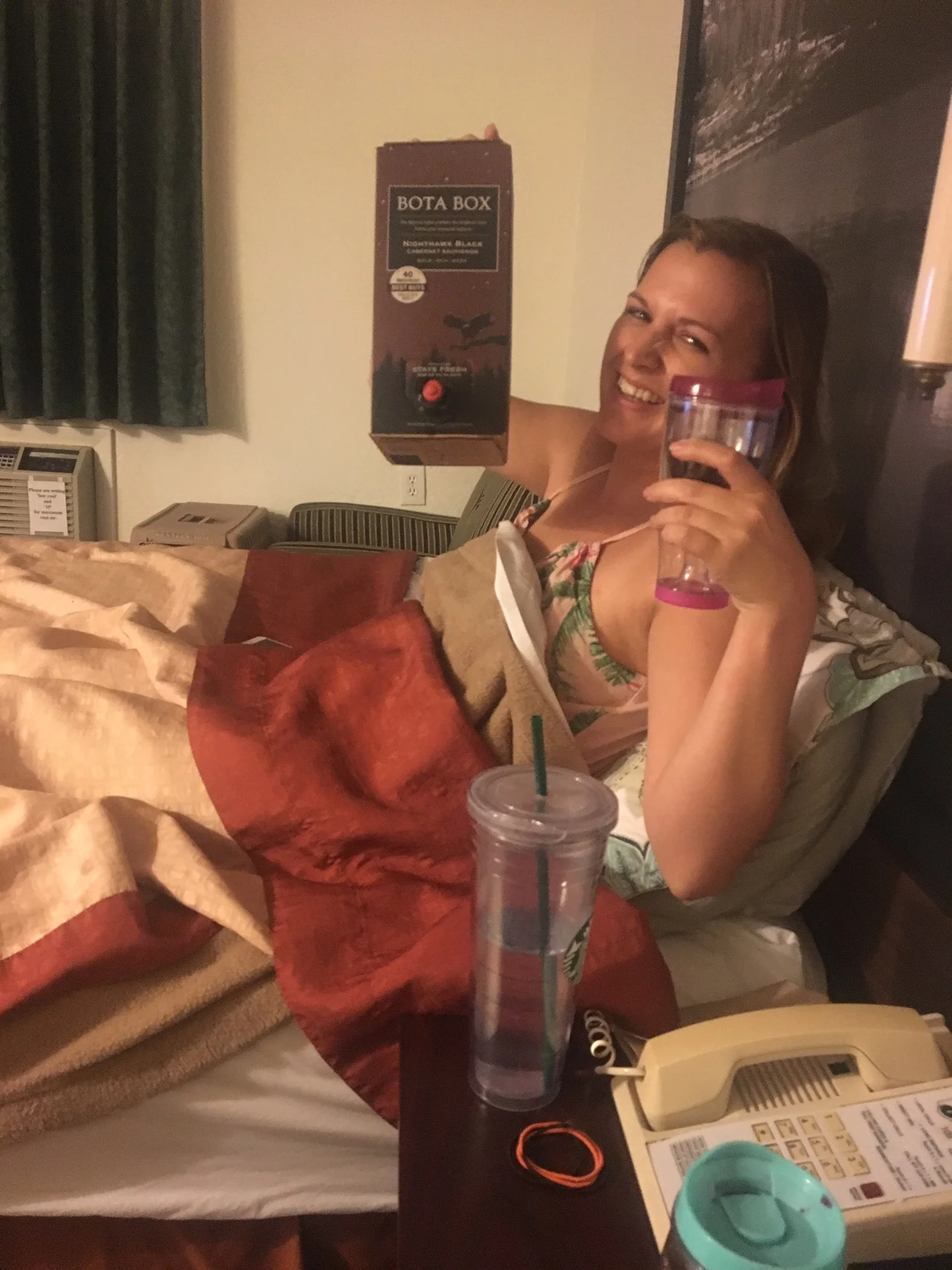The next day, our first full day of driving, took us out of eastern Colorado and through northern Kansas. At first, the landscape looked much like that we had whizzed by the day before; islands or oases of habitation dot the rolling, wide landscape bare of much except grass, crops, and cows. You could see a town, marked by a circle or line of trees to provide shade or a wind/snow break from the weather, a church whose steeple pointed to the sky, and various grain elevators and cylindrical metal storage tanks, part of the agricultural complex. I saw the sign to Grinnell University, one of the best private colleges in the US, but from the highway, the city of Grinnell looked no different from the other momentary green spaces on the vast plains. What a town like Grinnell had to offer its students and faculty we could only guess as we sped by at 70 to 75 miles an hour. The other things I noticed were the signs along the road. Lots of signs mark the northern the road through Kansas, as if the advertised attractions could compensate for the seeming monotony of the landscape. It seems that the Kansas tourist board has made a concerted effort to promote this large, agricultural land as a place for curious travelers to stop and spend a little money in rural Kansas. It seems that in the mid-region of northern Kansas, the Catholic church has a strong hold, as evidenced by the multiple anti-abortion signs, signs noting the Catholic church in the town ahead, which you could see from the freeway, sometimes a white steeple, German style, or a more solid brick edifice with squared off turrets. Signs featuring Jesus with his halo/aura in the white robe, right hand extended upward in benediction, the left hand placed upon his heart appeared at regular intervals along the highway as reminders of the religious affiliation of the region. Alternately, signs for attractions and museums competed for the attention of those who were not racing to Georgia, those who could stop and enjoy the historical and cultural significance of the region. A sampling includes the Old Soddies Museum, the Czeck museum with the largest Czech Egg in the world, the Buffalo Soldiers Museum and Vietnam Vets Museum advertised on the same sign, the Train Orphan Museum, the Kansas Motorcycle Museum, the Kansas Speedway Museum, the Greyhound Museum, and a commemoration of the first chunk of interstate near Dwight Eisenhower’s hometown of Abilene. Given the number of signs advertising quilts and yarn, we must have been on the Quilting Trail. The quirky yarn and wool signs put me in mind of my friend Rebekah who posts Facebook notices about what she is crocheting. The freeway was also marked by historical notices from Kit Carson to Eisenhower, Robert Dole, and Harry Truman, three astronauts from Kansas, reminders of the old cowboy days and the cattle trails to Abilene, Kansas. Lawrence, Kansas touted itself as the birthplace of the civil war, as the place where John Brown’s violent campaign entangled the mid-western states in the issue of slavery. Of course, you could not go through Kansas without reminders of The Wizard of Oz; on one of the many signs for the Oz Museum a sign for Toto’s Tacoz was appended, a modern update to a classic Kansas story.
Reading the signs along the road not only provides much-needed diversion for the harried traveler, intent on putting in as many miles as possible in a day. The road signs also give a sense of the state and its idea of itself. Northern Kansas seemed to say that there is not much naturally of interest for the traveler and so the need for attractions. In contrast, there were few signs for museums in Missouri, with the exception of the promise of a tour of the Missouri State Prison. As we went further east and into areas adorned with trees and lush vegetation, the need to post notices of attractions seemed to vanish.
After a long day, we rolled in to Columbia, Missouri. From home, my husband had found a room for us at a pet-friendly motel. When we finally made it to the motel, the night desk clerk told us that we had to pay a pet deposit in cash and then said that they did not allow cats. Cameron and I were too tired and not in any mood for that kind of nonsense. He backed off when Cameron gave him twenty dollars in cash to let us bring the cats in. What a mess! Some teen aged girls who roamed the motel halls, evidently in town for a soccer game reminded us of our past soccer days—athletic girls, the smell of sweat, cheap motels. Once settled in, and after some chugs of wine, Cameron got some soup and salad for us from a nearby Olive Garden.
